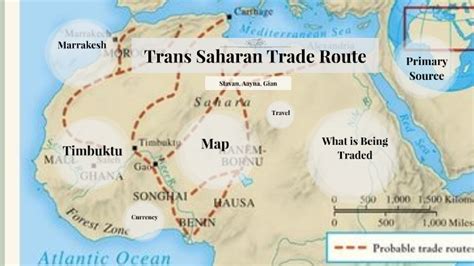Definition of Trans-Saharan Trade
The Trans-Saharan trade routes were a network of ancient and medieval trade routes that crisscrossed the vast expanse of the Sahara Desert, connecting North Africa with sub-Saharan Africa. This trade facilitated the exchange of goods, ideas, and cultures between diverse regions of the continent.

History and Significance
Trans-Saharan trade dates back to at least the 5th century BCE, with records suggesting it reached its peak during the 8th to 16th centuries CE. The primary routes included:
- Northern Route: From Morocco to Egypt via the Fezzan and Siwa Oases
- Central Route: From Tunisia to the Niger Basin via the Aïr Mountains
- Western Route: From Ghana to Morocco via the Taghaza Salt Mines
These routes were initially exploited for the transportation of salt, gold, slaves, and ivory. However, over time, they became conduits for the spread of Islam, the development of cities and kingdoms, and the transfer of technological advancements.
Key Commodities
Gold: Sub-Saharan Africa was abundant in gold, which was highly prized in North Africa and Europe. The flow of gold northward fueled the economies of West African kingdoms such as Ghana, Mali, and Songhai.
Salt: The Sahara Desert was a vast source of salt, which was essential for preservation and flavoring food. Salt was extracted from mines and traded southward for gold and other goods.
Slaves: Slavery was a significant component of the Trans-Saharan trade, particularly during the later centuries. Slaves were primarily captured from sub-Saharan Africa and transported northward for domestic and agricultural labor.
Ivory: Ivory, from elephant tusks, was another valuable commodity traded along the routes. It was used for crafting ornaments, religious objects, and other luxury items.
Impact on Society
The Trans-Saharan trade had a profound impact on the societies it connected:
Cultural Exchange: The trade routes facilitated the spread of Islam, Arabic language, and cultural practices from North Africa to sub-Saharan Africa.
Economic Development: The exchange of goods led to the rise of trading cities and kingdoms along the routes. The influx of gold boosted the economies of West African regions.
Technological Advancements: The Trans-Saharan trade introduced new technologies to sub-Saharan Africa, such as iron tools, weapons, and water management systems.
Decline and End
The Trans-Saharan trade began to decline in the 16th century CE, primarily due to:
- Rise of Maritime Trade: European explorers established direct trade routes between Europe and West Africa, bypassing the overland routes.
- Political Instability: Warfare and political fragmentation weakened the kingdoms and cities along the trade routes.
- Desertification: Climate change and overgrazing led to the expansion of the Sahara Desert, making trade more difficult.
Legacy
The Trans-Saharan trade left an enduring legacy on African history:
- Spread of Islam: Islam became dominant in many parts of sub-Saharan Africa through the trade routes.
- Cultural Diversity: The exchange of ideas and goods enriched the cultures of both North and sub-Saharan Africa.
- Trade Networks: The routes established during the Trans-Saharan trade laid the foundation for future trade relations between different regions of Africa.
Tables
| Commodity | Origin | Destination | Importance |
|---|---|---|---|
| Gold | Sub-Saharan Africa | North Africa and Europe | Financed West African kingdoms |
| Salt | Sahara Desert | Sub-Saharan Africa | Essential for food preservation |
| Slaves | Sub-Saharan Africa | North Africa | Labor force for agriculture and domestic tasks |
| Ivory | Sub-Saharan Africa | North Africa and Europe | Used for crafting and religious objects |
FAQs
1. When did the Trans-Saharan trade begin?
Answer: At least the 5th century BCE
2. What was the primary route for gold trade?
Answer: The Western Route
3. What religion spread along the Trans-Saharan trade routes?
Answer: Islam
4. What caused the decline of the Trans-Saharan trade?
Answer: Rise of maritime trade, political instability, and desertification
5. What is the legacy of the Trans-Saharan trade?
Answer: Spread of Islam, cultural diversity, and establishment of trade networks
6. What were some of the technological advancements introduced through the trade?
Answer: Iron tools, weapons, and water management systems
Conclusion
The Trans-Saharan trade was a pivotal force in African history, connecting diverse regions and fostering cultural, economic, and technological development. Its legacy continues to shape the continent’s present and future.
